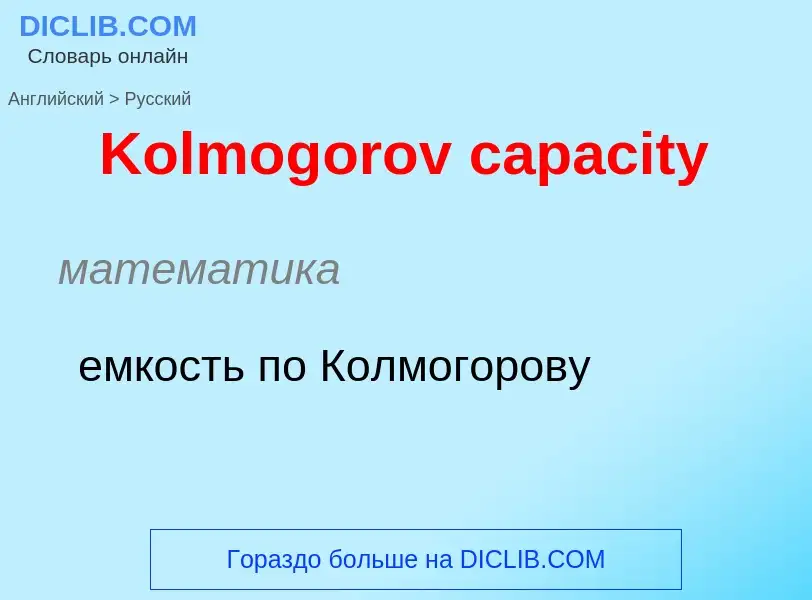Translation and analysis of words by ChatGPT artificial intelligence
On this page you can get a detailed analysis of a word or phrase, produced by the best artificial intelligence technology to date:
- how the word is used
- frequency of use
- it is used more often in oral or written speech
- word translation options
- usage examples (several phrases with translation)
- etymology
Kolmogorov capacity - translation to russian
математика
емкость по Колмогорову
математика
энтропийное число
Definition
Wikipedia
In fractal geometry, the Minkowski–Bouligand dimension, also known as Minkowski dimension or box-counting dimension, is a way of determining the fractal dimension of a set in a Euclidean space , or more generally in a metric space . It is named after the Polish mathematician Hermann Minkowski and the French mathematician Georges Bouligand.
To calculate this dimension for a fractal , imagine this fractal lying on an evenly spaced grid and count how many boxes are required to cover the set. The box-counting dimension is calculated by seeing how this number changes as we make the grid finer by applying a box-counting algorithm.
Suppose that is the number of boxes of side length required to cover the set. Then the box-counting dimension is defined as
Roughly speaking, this means that the dimension is the exponent such that , which is what one would expect in the trivial case where is a smooth space (a manifold) of integer dimension .
If the above limit does not exist, one may still take the limit superior and limit inferior, which respectively define the upper box dimension and lower box dimension. The upper box dimension is sometimes called the entropy dimension, Kolmogorov dimension, Kolmogorov capacity, limit capacity or upper Minkowski dimension, while the lower box dimension is also called the lower Minkowski dimension.
The upper and lower box dimensions are strongly related to the more popular Hausdorff dimension. Only in very special applications is it important to distinguish between the three (see below). Yet another measure of fractal dimension is the correlation dimension.



![PDF]]. PDF]].](https://commons.wikimedia.org/wiki/Special:FilePath/KolmogorovDistrPDF.png?width=200)
